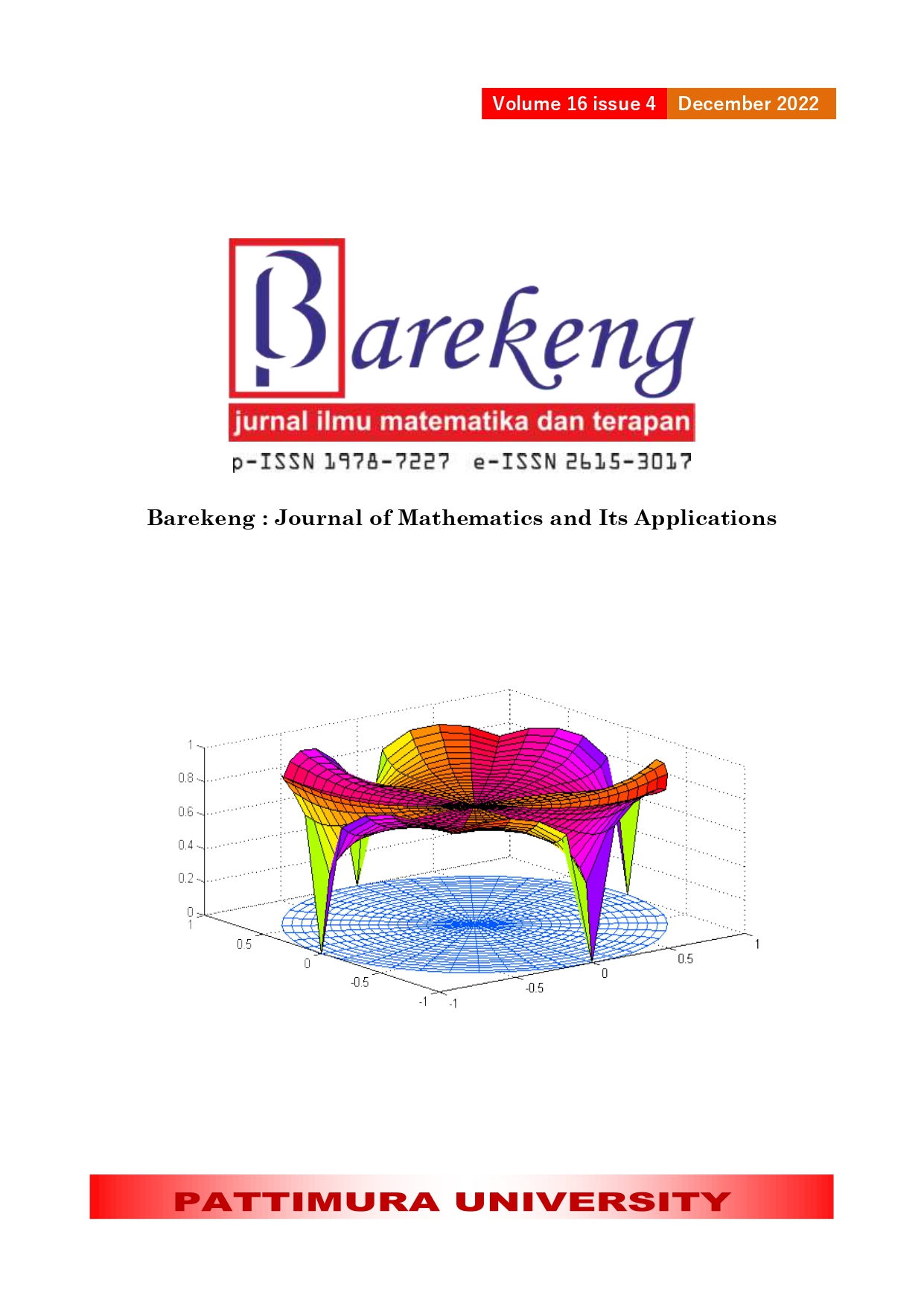CREDIT CARD FRAUD DETECTION USING LINEAR DISCRIMINANT ANALYSIS (LDA), RANDOM FOREST, AND BINARY LOGISTIC REGRESSION
Abstract
The growth of electronic payment usage makes the monetary tension of credit-card deception is changing into major defiance for finance and technology companies. Therefore, pressuring them to continuously advance their fraud detection system is crucial. In this research, we describe fraud detection as a classification issue by comparing three methods. The method used is Linear Discriminant Analysis (LDA), Random Forest, and Binary Logistic Regression. The dataset used is a dataset containing transactions made by credit cards. The challenge in this analysis is that the dataset is highly unbalanced, so SMOTE must perform better on the data. The dataset contains only continuous features that are transformed into Principal Component Scores (PCs). The results show that the binary regression algorithm, the Random Forest algorithm, and the Linear Discriminant Analysis with variables that have SMOTE have AUC values greater than using the original variables. The largest AUC value was obtained by binary logistic regression with 90:10 separation data and Random Forest Algorithm with 60:40 separation data.
Downloads
References
M. Ahsan, A. K. Anam, E. Julian, and A. I. Jaya, “Interpretable Predictive Model of Network Intrusion Using Several Machine Learning Algorithms,” BAREKENG J. Ilmu Mat. dan Terap., vol. 16, no. 1, pp. 57–64, 2022.
A. Tharwat, T. Gaber, A. Ibrahim, and A. E. Hassanien, “Linear discriminant analysis: A detailed tutorial,” Ai Commun., vol. 30, pp. 169–190, 2017, doi: 10.3233/AIC-170729.
F. Carcillo, Y.-A. Le Borgne, O. Caelen, Y. Kessaci, F. Oblé, and G. Bontempi, “Combining unsupervised and supervised learning in credit card fraud detection,” Inf. Sci. (Ny)., vol. 557, pp. 317–331, 2021.
A. Husejinovic, “Credit card fraud detection using naive Bayesian and C4. 5 decision tree classifiers,” Husejinovic, A.(2020). Credit card Fraud Detect. using naive Bayesian C, vol. 4, pp. 1–5, 2020.
S. Dhankhad, E. Mohammed, and B. Far, “Supervised machine learning algorithms for credit card fraudulent transaction detection: a comparative study,” in 2018 IEEE International Conference on Information Reuse and Integration (IRI), 2018, pp. 122–125.
N. Malini and M. Pushpa, “Analysis on credit card fraud identification techniques based on KNN and outlier detection,” in 2017 Third International Conference on Advances in Electrical, Electronics, Information, Communication and Bio-Informatics (AEEICB), 2017, pp. 255–258.
S. Patil, V. Nemade, and P. K. Soni, “Predictive modelling for credit card fraud detection using data analytics,” Procedia Comput. Sci., vol. 132, pp. 385–395, 2018.
K. Modi and R. Dayma, “Review on fraud detection methods in credit card transactions,” in 2017 International Conference on Intelligent Computing and Control (I2C2), 2017, pp. 1–5.
J. O. Awoyemi, A. O. Adetunmbi, and S. A. Oluwadare, “Credit card fraud detection using machine learning techniques: A comparative analysis,” in 2017 International Conference on Computing Networking and Informatics (ICCNI), 2017, pp. 1–9, doi: 10.1109/ICCNI.2017.8123782.
K. Fu, D. Cheng, Y. Tu, and L. Zhang, “Credit card fraud detection using convolutional neural networks,” in International conference on neural information processing, 2016, pp. 483–490.
M. Komorowski, D. Marshall, J. Salciccioli, and Y. Crutain, “Exploratory Data Analysis,” in Secondary Analysis of Electronic Health Records, 2016, pp. 185–203.
R. A. Johnson and G. K. Bhattacharyya, Statistics: principles and methods. John Wiley & Sons, 2019.
A. C. Sitepu, W. Wanayumini, and Z. Situmorang, “Determining Bullying Text Classification Using Naive Bayes Classification on Social Media,” J. Varian, vol. 4, no. 2, pp. 133–140, 2021.
I. K. P. Suniantara, G. Suwardika, and S. Soraya, “Peningkatan Akurasi Klasifikasi Ketidaktepatan Waktu Kelulusan Mahasiswa Menggunakan Metode Boosting Neural Network,” J. Varian, vol. 3, no. 2, pp. 95–102, 2020.
P. Galdi and R. Tagliaferri, “Data Mining: Accuracy and Error Measures for Classification and Prediction,” 2018.
Copyright (c) 2022 Muhammad Ahsan, Tabita Yuni Susanto, Tiza Ayu Virania, Andi Indra Jaya

This work is licensed under a Creative Commons Attribution-ShareAlike 4.0 International License.
Authors who publish with this Journal agree to the following terms:
- Author retain copyright and grant the journal right of first publication with the work simultaneously licensed under a creative commons attribution license that allow others to share the work within an acknowledgement of the work’s authorship and initial publication of this journal.
- Authors are able to enter into separate, additional contractual arrangement for the non-exclusive distribution of the journal’s published version of the work (e.g. acknowledgement of its initial publication in this journal).
- Authors are permitted and encouraged to post their work online (e.g. in institutional repositories or on their websites) prior to and during the submission process, as it can lead to productive exchanges, as well as earlier and greater citation of published works.






1.gif)



